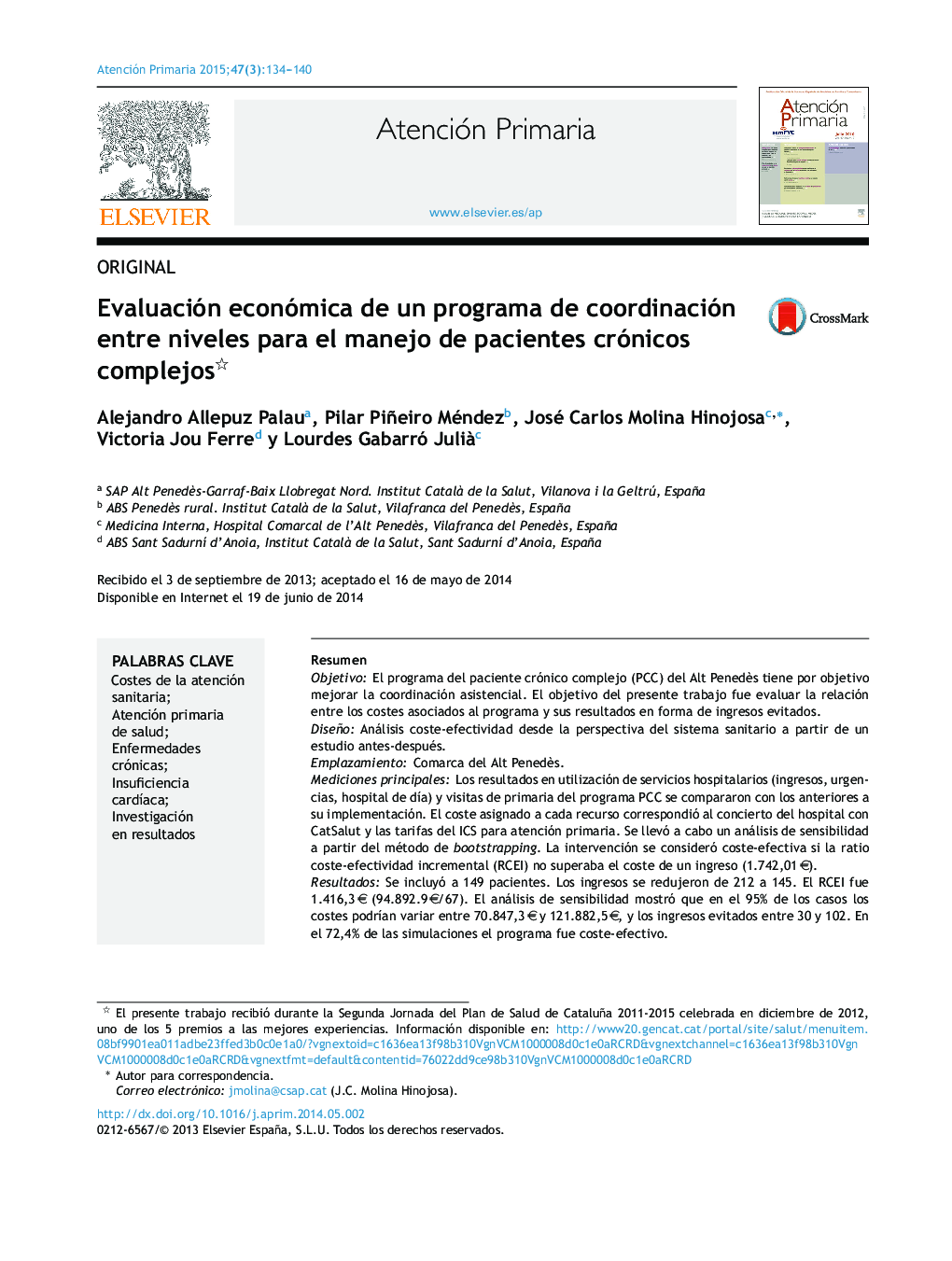| Article ID | Journal | Published Year | Pages | File Type |
|---|---|---|---|---|
| 3457344 | Atención Primaria | 2015 | 7 Pages |
ResumenObjetivoEl programa del paciente crónico complejo (PCC) del Alt Penedès tiene por objetivo mejorar la coordinación asistencial. El objetivo del presente trabajo fue evaluar la relación entre los costes asociados al programa y sus resultados en forma de ingresos evitados.DiseñoAnálisis coste-efectividad desde la perspectiva del sistema sanitario a partir de un estudio antes-después.EmplazamientoComarca del Alt Penedès.Mediciones principalesLos resultados en utilización de servicios hospitalarios (ingresos, urgencias, hospital de día) y visitas de primaria del programa PCC se compararon con los anteriores a su implementación. El coste asignado a cada recurso correspondió al concierto del hospital con CatSalut y las tarifas del ICS para atención primaria. Se llevó a cabo un análisis de sensibilidad a partir del método de bootstrapping. La intervención se consideró coste-efectiva si la ratio coste-efectividad incremental (RCEI) no superaba el coste de un ingreso (1.742,01 €).ResultadosSe incluyó a 149 pacientes. Los ingresos se redujeron de 212 a 145. El RCEI fue 1.416,3 € (94.892.9 €/67). El análisis de sensibilidad mostró que en el 95% de los casos los costes podrían variar entre 70.847,3 € y 121.882,5 €, y los ingresos evitados entre 30 y 102. En el 72,4% de las simulaciones el programa fue coste-efectivo.ConclusionesEl análisis de sensibilidad muestra que en la mayoría de situaciones el programa del PCC sería coste-efectivo, aunque en un porcentaje de casos el programa podría suponer un aumento global del coste de la atención, a pesar de suponer siempre una reducción en el número de ingresos.
ObjectiveThe complex chronic patient program (CCP) of the Alt Penedès aims to improve the coordination of care. The objective was to evaluate the relationship between the costs associated with the program, and its results in the form of avoided admissions.DesignDost-effectiveness analysis from the perspective of the health System based on a before-after study.LocationAlt Penedès.Main measurementsHealth services utilisation (hospital [admissions, emergency visits, day-care hospital] and primary care visits). CCP Program results were compared with those prior to its implementation. The cost assigned to each resource corresponded to the hospital CatSalut's concert and ICS fees for primary care. A sensitivity analysis using boot strapping was performed. The intervention was considered cost-effective if the incremental cost-effectiveness ratio (ICER) did not exceed the cost of admission (€ 1,742.01).Results149 patients were included. Admissions dropped from 212 to 145. The ICER was € 1,416.3 (94,892.9 €/67). Sensitivity analysis showed that in 95% of cases the cost might vary between € 70,847.3 and € 121,882.5 and avoided admissions between 30 and 102. In 72.4% of the simulations the program was cost-effective.ConclusionsSensitivity analysis showed that in most situations the PCC Program would be cost-effective, although in a percentage of cases the program could raise overall cost of care, despite always reducing the number of admissions.
